Welcome to the fourth annual OFR prospect list! This year we return with another 50 prospects. As with last year, I will be joined this year by Sunday Farm Report co-writer and OFR Farm Report Podcast co-host Matt Chrietzberg.
Infielders and arms make up this portion of the list, including three Fire Frogs that opened some eyes in 2019.
Also in this series:
Atlanta Braves Top 50 Prospects: #50-41
Atlanta Braves Top 50 Prospects: #30-21
Atlanta Braves Top 50 Prospects: #20-11
Atlanta Braves Top 50 Prospects: #10-1
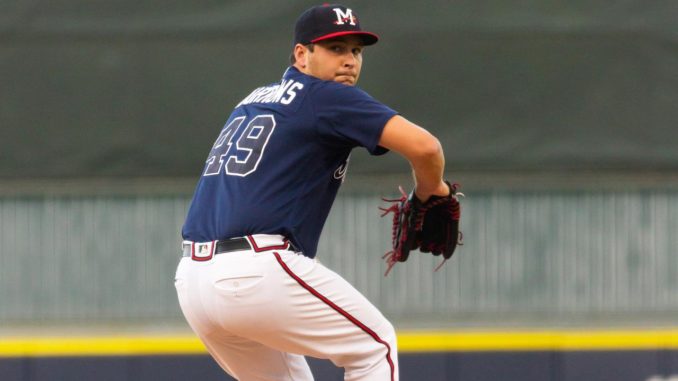
40. Thomas Burrows, LHP
Age: 25 | Throws: L
4.42 ERA | 3.96 FIP | 43 G, 0 GS | 57.0 IP | 3.79 BB/9 | 9.95 K/9 (AA and AAA)
Current Assignment: AA Mississippi
Acquired: Trade w/Seattle Mariners – 2017
Prior Year Ranking: 26
Burrows is coming off a slightly disappointing season in which he was expected to at least have a shot to contribute to the big-league bullpen. However, even in a bullpen that only had Jerry Blevins and Sean Newcomb from the left side for most of the campaign, Burrows could not take advantage of the opportunity.
He started off the season at Gwinnett where he struggled to a 5.21 ERA and 1.63 WHIP over 16 games before being moved down to Mississippi in late May. Burrows’ stay in Mississippi only lasted for about a month where he had a 1.59 ERA and didn’t walk any hitters in eight outings before being promoted back to Gwinnett in early July. Burrows pitched better in his second tour through Gwinnett with only two horrendous outings inflating his numbers in eleven appearances. In early August, though, he was moved back down to Mississippi for the remainder of the season due to a roster crunch created by the simultaneous promotions of Tucker Davidson, Ian Anderson, Cristian Pache and Drew Waters. His AA numbers were sub-par on his second Mississippi stint primarily due to back-to-back outings in late August where he gave up seven earned runs over 3.1 innings.
Burrows, whose arsenal primarily consists of a low-90s fastball and a good slider, excelled against LHHs to the tune of a .501 OPS and striking out 31% of them while RHHs rang up a .752 OPS along with all five home runs he gave up for the season. He should begin the 2020 season back at Gwinnett with the same opportunity to make his way to Atlanta during the season if he can take advantage of it. -MC

39. Trey Riley, RHP
Age: 21 | Throws: R
7.67 ERA | 5.64 FIP | 17 G, 12 GS | 58.2 IP | 7.06 BB/9 | 6.9 K/9 (A)
Current Assignment: A Rome
Acquired: Drafted, 5th Round – 2018
Prior Year Ranking: 29
One of, if not the top-rated JUCO prospects in the 2018 draft, Riley is in possession of two tremendous weapons: an explosive fastball that tracks into the high 90s and a high-spin slider with tremendous vertical and horizontal break. His curveball isn’t anything to sneeze at either. There are few pitchers in the organization with higher upside talent.
What sent Riley tumbling down this list however is an acute lack of command caused by an inconsistent release point. Riley will have dominating innings, and then follow that up with an inning where he can’t find the strike zone, or finds it way too much. Batters hit a robust .317/.435/.424 off him in 2019. Riley also missed significant time with an injury, 4 weeks in late June through July.
Riley was moved from the rotation to the bullpen in the second half of 2019, and the bullpen seems to be best suited to his profile. Until Riley gets his mechanics worked out however, it’s going to be difficult to predict what kind of production he will provide whichever team he ends up on. -AH
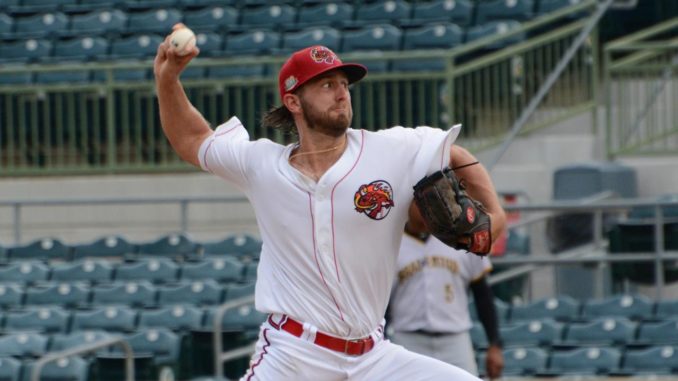
38. Brooks Wilson, RHP
Age: 23 | Throws: R
2.47 ERA | 2.86 FIP | 24 G, 11 GS | 87.1 IP | 2.58 BB/9 | 7.52 K/9 (A+)
Current Assignment: A+ Florida
Acquired: Drafted, 7th Round – 2018
Prior Year Ranking: N/A
Wilson was a starting pitcher for his first three seasons at Stetson University, but he got Atlanta’s attention his senior year after he was one of the more dominating relievers in the college game. Wilson did well in that same role in 2018 after being drafted for Danville and Rome. Certainly a positive development, but senior-sign relievers doing well against much younger opposition isn’t enough to get most players on a lot of prospect lists.
A funny thing happened to Wilson last season however. After 5 solid if unremarkable outings with the Fire Frogs to start his 2019, Wilson was tabbed as an emergency starter to fill out the second half of a double-header. Wilson tossed 4 scoreless in that outing. When the Fire Frogs needed a starter again at the end of June with right-hander Freddy Tarnok on the shelf, Wilson filled in again. Wilson continued to impress as a starter, and by mid-July he was ensconced. As a starter, Wilson had a 2.60 ERA in 62.1 IP, holding batters to a .223/.276/.313 batting line and striking out 56. While Wilson’s ERA was only 2.16 as a reliever, all of his other numbers were worse: .280/.339/.330 against, only 17 strikeouts in 25 innings.
Wilson throws a heavy low-90s four-seamer, a big 12-6 curveball, and a developing splitter. This combination generates a lot of groundballs. and he only allowed two home runs all season. It’s possible he could get better production as he starts to play in front of better defenses. A former two-way player at Stenson, Wilson is an athletic fielder, further helping his groundball tendencies.
Wilson seems likely to move up to AA Mississippi in 2020, either for Opening Day or soon after. It’s unclear if he will still be a starting rotation candidate in the crowded Braves system, but he’s made himself a far more intriguing prospect by seizing the starting opportunities that were presented. -AH
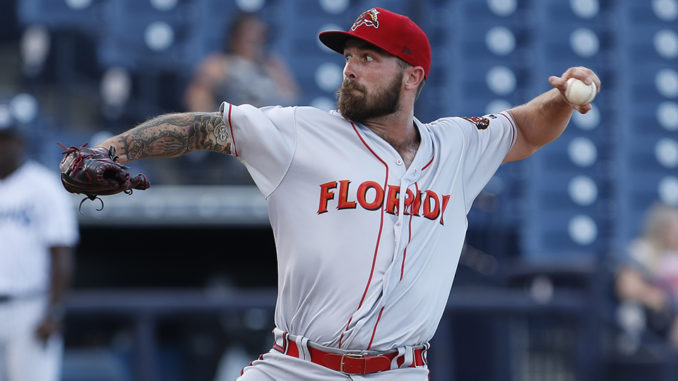
37. Phil Pfeifer, LHP
Age: 27 | Throws: L
2.97 ERA | 2.93 FIP | 30 G, 18 GS | 133.1 IP | 2.84 BB/9 | 10.73 K/9 (A+/AA/AAA)
Current Assignment: AAA Gwinnett
Acquired: Trade w/Los Angeles Dodgers – 2016
Prior Year Ranking: N/A
Philip Pfeifer, in his fifth professional season out of Vanderbilt, began the 2019 season as a reliever in the Mississippi bullpen. He got off to a horrific start in being scored upon in six of his first seven outings while also walking hitters in six of them. He was then moved down to High-A Florida where he was gradually built up as a starter. His first ten starts included a handful of good outings, but the overall numbers were still middling with a 4.99 ERA and a 1.338 WHIP although he was showing progress in walking fewer hitters. However, beginning with his start on June 30th, Pfeifer went on a dominant run of six starts where he had an ERA of 0.91, a WHIP of 0.857 and one of the best starts anywhere in the Braves system this past season on July 18th where he pitched eight innings of three-hit, shutout ball while striking out 17. Soon thereafter, he was promoted back to Mississippi where he compiled a 1.17 ERA and a 0.957 WHIP in four starts before being promoted to Gwinnett in late August. That promotion was designed to give Pfeifer a shot as a left-handed reliever. After a rough first outing, he finished up strong with 5.2 scoreless innings over his last two outings with nine strikeouts.
Pfeifer’s array of pitches includes a low-90s fastball that can reach 95, a solid changeup and an occasional curveball. His improvement from 6.5 walks per nine innings over the previous two seasons to under three per nine in 2019 have given new life to a career that was on life support. The Braves will need to decide if this season’s improvement is worthy of adding him to the 40-man roster for this offseason’s Rule 5 Draft. If they do protect him, he would likely start at Gwinnett in 2020 with a seat on the Atlanta/Gwinnett shuttle to provide depth to the bullpen. If they choose not to protect him, he might find himself a tempting target for another team with the improvement he showed this past season. -MC
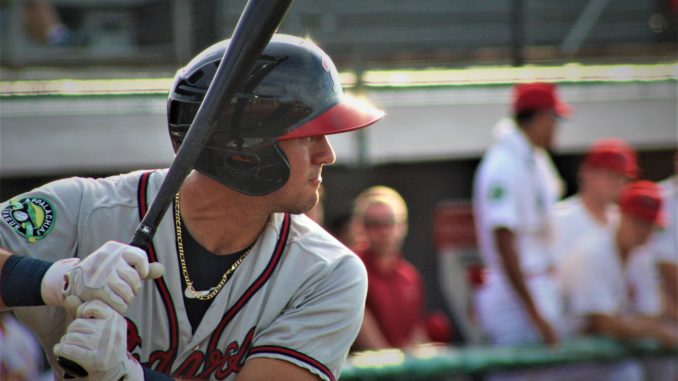
36. Beau Philip, SS
Age: 21 | Bats: R
.193/.297/.280 | 69 wRC+ | 4 HR | 5 SB | 10.9% BB% | 21.3% K (Rk+)
Current Assignment: Rk+ Danville
Acquired: Drafted, 2nd Round – 2019
Prior Year Ranking: N/A
A transfer junior out of Oregon State, Philip was considered a reach by the Braves in the 2nd round of the draft, but his selection helped the Braves carry a large amount of their draft signing bonus pool into the later rounds, setting up the Braves to pick up a number of high-upside prep players. That said, the Braves didn’t select Philip only because he would agree to an under-slot deal.
When healthy, Philip was one of the faster players in the 2019 draft, but hamstring issues slowed him down and lasted into his pro season. He has quick hands and a quick bat, looking to drive the ball into the pull-side gap, and he hits the ball with authority. What hurt Philip in 2019 was that he was often hitting with authority right into the ground; some slight swing adjustments to add a little loft would likely go a long way. Defensively Philip has the makings of an above-average defender at shortstop, displaying good instincts and a plus arm.
Despite a disappointing start to his pro career at the plate, I would expect Philip to begin 2020 as Rome’s starting shortstop. There’s a lot to like about Philip if he can bring all his positive attributes regularly onto the field. -AH
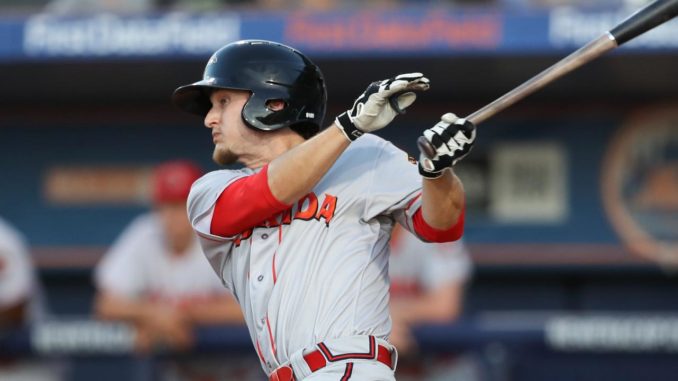
35. Riley Delgado, SS
Age: 25 | Bats: R
.282/.324/.323 | 95 wRC+ | 0 HR | 1 SB | 5.1% BB | 7.7% K (A+)
Current Assignment: A+ Florida
Acquired: Drafted, 9th Round – 2017
Prior Year Ranking: 27
While Delgado was a 9th-round senior sign in 2017, no less than Chipper Jones was intrigued by his all-fields, line-drive approach at the plate when he worked out for the Braves at SunTrust Park. That approach has served Delgado well so far in his pro career, and he’s been a key top-half-of-the-order hitter for Rome in ’18 and Florida last season. While his overall offensive numbers went down slightly, he was still the most productive hitter in the Florida line-up, outside of Trey Harris‘s brief stop with the team between his Rome and Mississippi stints.
Delgado has perhaps the best batting eye in the organization, seemingly able to make contact at will. He goes opposite field more often than not. The reason for his slight dip in production was that a greater percentage of those balls put in play would go on the ground, likely thanks to facing higher quality pitching. Defensively he was solid if unspectacular at shortstop in 2018, but took a step back at the position in 2019, perhaps due to being used primarily at third base for most of the first half of the year with Riley Unroe manning shortstop. Delgado’s best position is probably second base.
Second base is where I suspect Delgado will start 2020, in AA Mississippi with Braden Shewmake at shortstop and CJ Alexander at third. Delgado is the type of hitter who could succeed at cavernous TrustMark Park and it’s expansive outfield that benefits an all-fields, line-drive approach. -AH
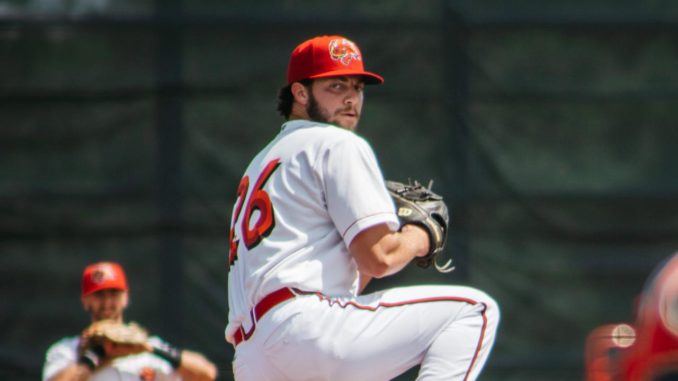
34. Hayden Deal, LHP
Age: 25 | Throws: L
3.24 ERA | 3.23 FIP | 23 G, 22 GS | 119.1 IP | 2.41 BB/9 | 7.47 K/9 (A+)
Current Assignment: A+ Florida
Acquired: Minor League Free Agent – 2017
Prior Year Ranking: N/A
Hayden Deal spent the entire 2018 season at Rome, where he was mainly a bullpen arm with a handful of starts mixed in. For 2019, he was in the Florida Fire Frogs rotation from day one and spent the entire season there. Deal got off to a quick start with eleven straight starts with at least five innings pitched and two or fewer earned runs. While April and May were dominant months with an ERA of 1.65, a BAA of .201 and an OPS against of just over .500, June and July went just as badly in the other direction with a 5.31 ERA, a BAA of .341 and an OPS against of over .900. His August numbers, however, normalized with a 3.86 ERA, a .250 BAA and a .650 OPS against before his workload was backed off on during the last half of August.
Deal’s arsenal primarily consists of a low-90s fastball and a cutter he uses to neutralize righties. He doesn’t strike out many hitters (19.8% of batters faced) but minimizes free passes (6.4%) and gets hitters to pound the ball into the ground (58% groundball rate after a 61% rate in 2018).
Deal will start 2020 in the Mississippi rotation where he will get a true test of where he stands in the organization as he faces hitters closer to his age level after facing only 35 hitters younger than himself in 2019. He has a ceiling as a back-end starter although it’s more likely his potential future is that of a reliever in MLB. -MC
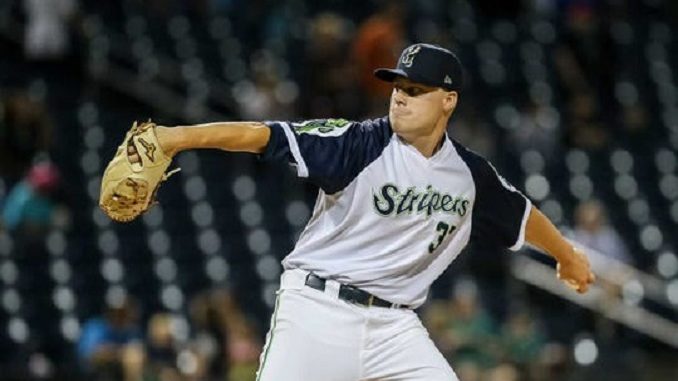
33. Corbin Clouse, LHP
Age: 24 | Throws: L
5.65 ERA | 5.33 FIP | 21 G, 0 GS | 28.2 IP | 4.08 BB/9 | 11.62 K/9 (AAA)
Current Assignment: AAA Gwinnett
Acquired: Drafted, 27th Round – 2016
Prior Year Ranking: 25
Corbin Clouse, much like fellow lefty reliever Thomas Burrows, entered the season with a legitimate opportunity to contribute to the Atlanta bullpen. However, that chance was derailed by ineffectiveness and injury as he got off to a slow start for Gwinnett with a 5.11 ERA and nine walks in 12.1 innings before missing two months with an injury. Upon his return, Clouse wasn’t any more effective than before he went out as he was scored upon in seven out of twelve outings to finish out the season. The only positives that can be taken from his season are a .683 OPS against right-handed hitters (although left-handed hitters torched him to the tune of a 1.051 OPS) and that he struck out 29% of batters.
Clouse’s arsenal mainly consists of two- and four-seam fastballs that get into the low 90s, a wicked slider and a change-up. He appears to have had a great deal of trouble adjusting to the new AAA baseball and lost a significant amount of development time due to injury as he threw fewer than 30 innings at AAA in 2019. Those injuries were serious enough that Corbin underwent surgery this month, and will likely spend most of the 2020 season rehabbing. -MC
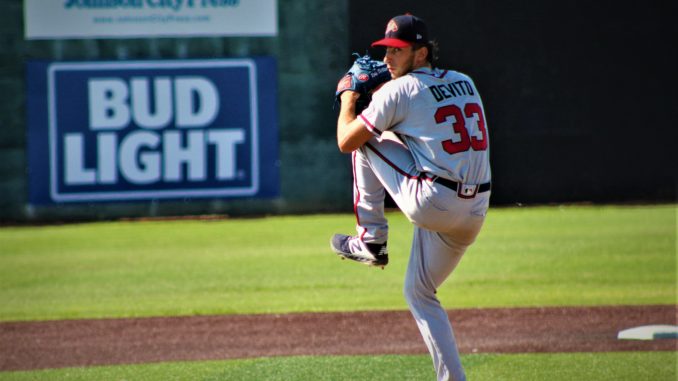
32. Ricky DeVito, RHP
Age: 21 | Throws: R
3.44 ERA | 4.43 FIP | 43 G, 8 GS | 57.0 IP | 3.93 BB/9 | 8.59 K/9 (Rk+ and A)
Current Assignment: A Rome
Acquired: Drafted, 8th Round – 2019
Prior Year Ranking: N/A
The Big East Pitcher of the Year for Seton Hall as a sophomore, DeVito didn’t have quite the same success his junior year, and the Braves were able to grab him in the 8th round for an over-slot bonus. DeVito had a solid pro debut, throwing four scorless outings in seven starts for Danville before getting the quick promotion up to Rome for four starts at the end of the year. As with most pitchers drafted in 2019, DeVito was kept to a tight pitch limit, only throwing more than 70 pitches in his last two starts.
DeVito stands at 6′-3″ and looks like he could fill out his frame a little more. His fastball currently sits in the low ’90s, but he had two relatively polished secondary offerings, a slider and a change-up, so if he can build up stamina he should be able to keep finding work in a starting rotation. DeVito’s command can come and go with his losing his release point on occasion. DeVito is fluid off the mound and looks to be an above average defender, which is helpful because like so many pitchers the Braves have recently targeted both in the minors and the majors, DeVito excels at inducing ground balls.
DeVito seems likely to return to Rome to start the 2020 season, but he could be a candidate to follow on the path of several recent college draft picks and quickly up the organizational ladder. -AH
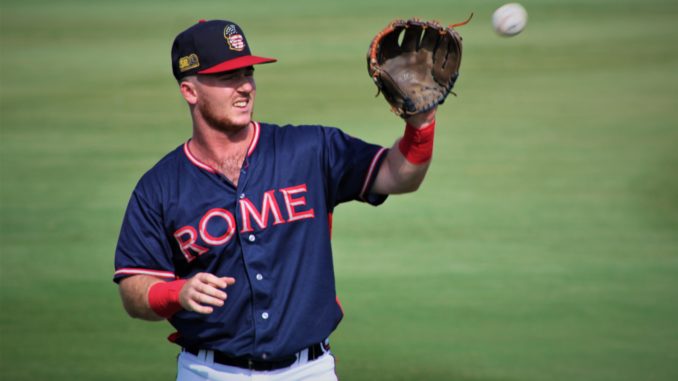
31. Greg Cullen, 2B
Age: 23 | Bats: L
.270/.393/.401 | 138 wRC+ | 9 HR | 2 SB | 12.5% BB | 17.6% K (A)
Current Assignment: A Rome
Acquired: Drafted, 15th Round – 2018
Prior Year Ranking: 47
The 2018 NCAA batting champion for Niagara University, Cullen has done a nice job transferring those skills to the wooden-bat pros, showing advanced strike-zone judgement and an all-fields approach. Combined with outfielder Justin Dean and his .386 OBP, the Rome squad consistently had early scoring opportunities all year with Dean and Cullen hitting 1-2 most of the season.
If Riley Delgado has the best batting eye in the organization, Cullen is probably his biggest competition. Working from a low center of gravity that reminds me of former Braves great Terry Pendleton from the left side, Cullen has a classic all-fields swing, looking to go up the middle but letting the ball travel. His swing can go flat at times leading to stretches of games where he hits a lot of ground balls. Even in those stretches however, he does a nice job of working counts and drawing walks. Cullen also got more comfortable with the level as the season progressed, and he did his best work late in the year, hitting .309/.402/.418 from August 1 on. He has a body type that could produce more over-the-fence power if he made some swing adjustments, and his 9 home runs in 2019 matched his totals from college and the rookie leagues combined. Defensively Cullen has good hands and an accurate arm at second base, and good positioning can make up for a lack or range and arm strength.
Cullen will likely report to wherever the Fire Frogs end up in 2020, and it will be interesting to see if Cullen continues to incorporate more of the power game into his offensive approach in the offensively depressed Florida State League. -AH

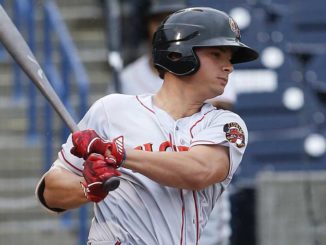
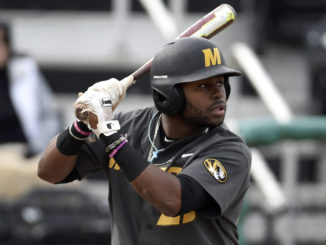
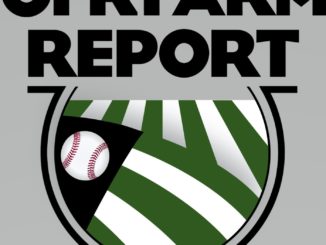
Leave a Reply